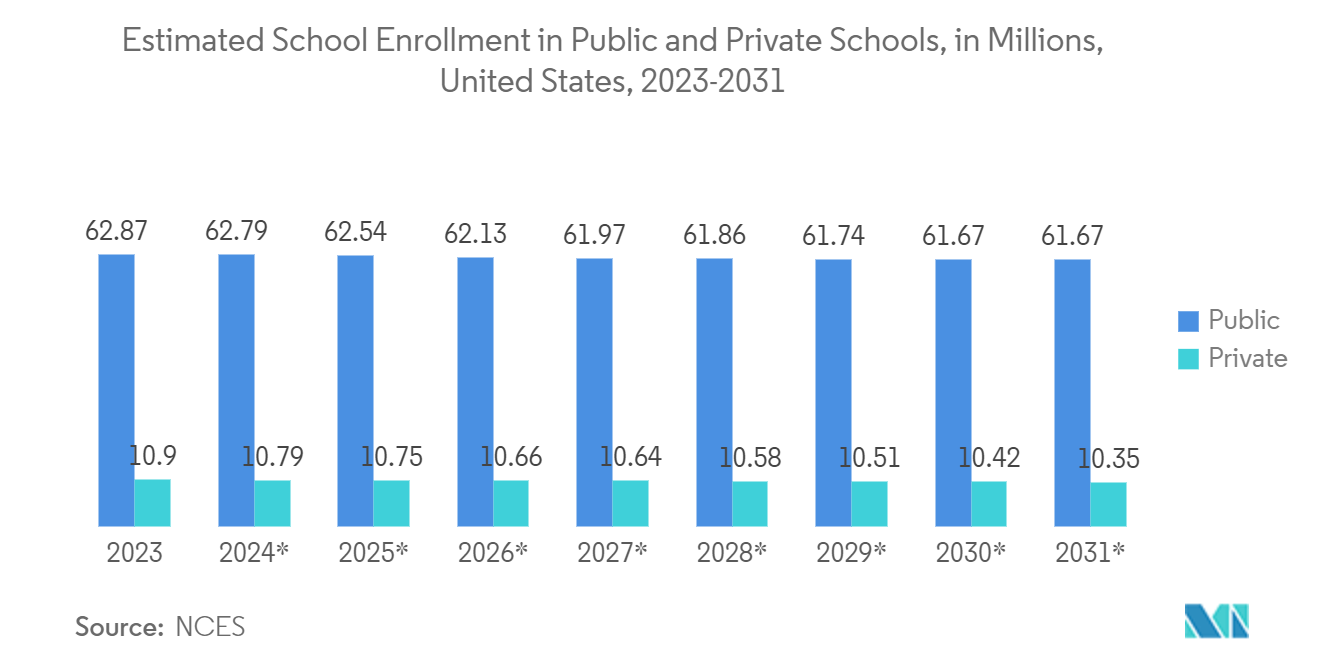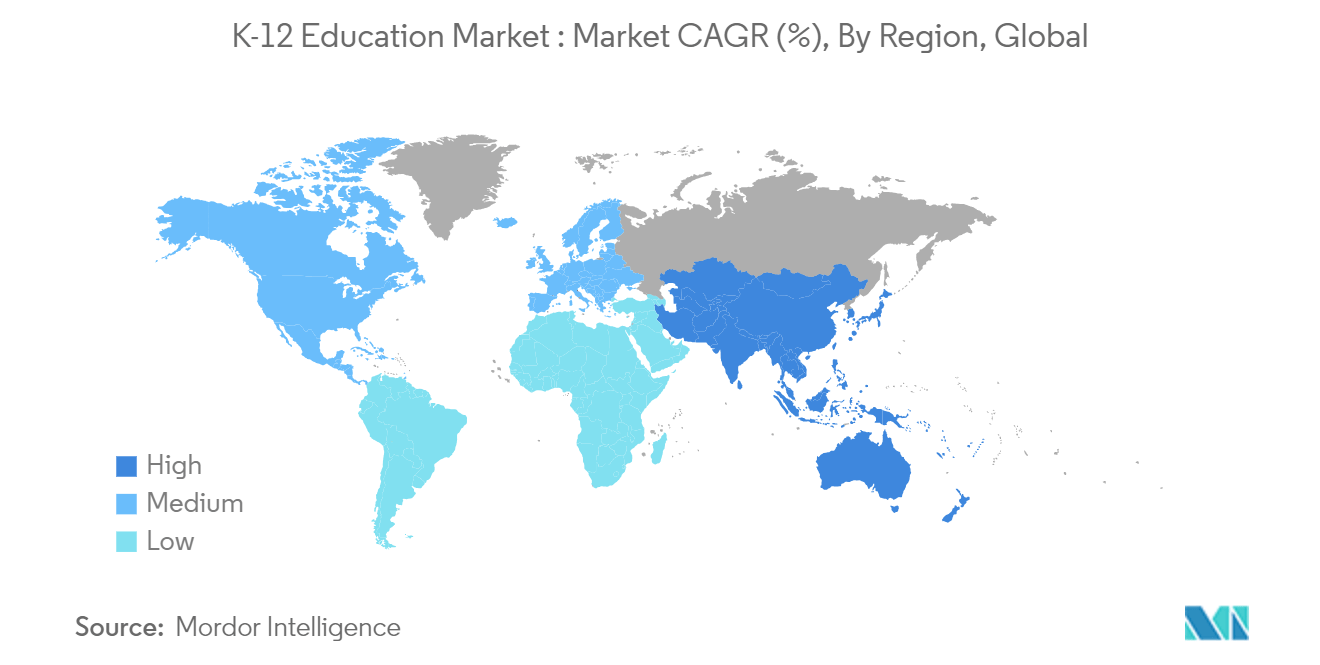Market Trends of K-12 Education Industry
The Public K-12 Education Segment to Witness Major Growth
- There has been widespread adoption of learning management systems in public schools, and countries worldwide are adopting e-learning in public K-12 education to create a digital education framework, driving the growth of the education market in K-12 public schools.
- The market has collaborated with vendors to increase their capabilities and support market growth. For instance, in October 2023, Open LMS, a provider of open-source learning management systems (LMS) in the United States, partnered with Blindside Networks, the creators of BigBlueButton. This purpose-built virtual classroom software focuses on learning outcomes. This partnership would enable Open LMS to offer an education-first virtual classroom for government K-12 education institutions, showing the demand for LMS solutions in public schools. This is expected to fuel the K-12 education market during the forecast period.
- Further, public schools in developed countries such as the United States offer training on digital literacy for students and the infrastructure needed for online learning, which could positively impact the growth of the K-12 education market. For instance, according to the survey results released by the United States Department of Education’s National Center for Education Statistics (NCES), there are far more public school students than private school students in the United States. By 2031, it is estimated that about 10.3 million students will be enrolled in private schools in the United States. This figure will stand close to 61.67 million for public school students.
- As part of the digital age, the technological landscape in pre-primary and primary schools is changing rapidly. Online learning is a value-driven concept that can positively impact the lives of even the youngest children. In addition, the personalized nature of digital learning enables pre-primary and primary school students to have a more engaging and immersive experience in distance learning through preschool at home. Therefore, the adoption of e-learning is expected to gain significant traction among primary school students who want to learn valuable lessons through online technology.
- Hence, the growing investments and prioritization by governments in various countries to support the adoption of digitalization in public K-12 schools for better management of the learning process are expected to drive the market growth of K-12 education worldwide in public schools during the forecast period.

Asia-Pacific Holds Significant Market Share
- The demand for K-12 education in Asia-Pacific has experienced remarkable growth, propelled by various factors highlighting the significance of quality education in developing nations. Several key trends contribute to the increasing demand for K-12 education across Asia-Pacific. South and Southeast Asia represent one-third of the world's population, with rapidly growing economies and populations. Densely populated and with a younger average age than many developed nations, there is an opportunity to bring a digital education transformation to these dynamic populations, creating a broad impact and improving the educational experience and livelihoods of millions.
- Asia-Pacific countries are integrating education technologies into their education systems. Due to this, a growing demand for schools leveraging technology to enhance learning experiences has been seen. Online platforms, interactive content, and digital tools are becoming integral components of modern K-12 education in the region.
- The partnership between the Government of Japan and Keio University paved the way for K-12 education to embrace distance learning. The university has been engaging in the revision of educational ICT policies in Japan for many years. In Japan, universities have been accumulating knowledge in distance learning practices since the emergence of the Internet. However, earlier educational ICT policy required the ICT system in K-12 education to depend on dedicated Internet lines. Japan's government implemented various measures to modernize its education systems for public elementary and junior secondary schools and international students amid the pandemic.
- With increased globalization, a growing interest is in providing students with a global perspective. International schools that offer a curriculum that combines local and global elements are gaining popularity. Parents seek schools that prepare their children to thrive in a diverse and interconnected world.
- Hence, the growing demand for K-12 education in Asia-Pacific is driven by demographic shifts, economic development, technological advancements, a focus on English proficiency, globalization trends, government initiatives, and the pursuit of high-quality education. This demand will continue evolving as the region positions itself as a critical player in the education landscape.


